What is Portable Digital Display Solution
Portable Digital Display Solutions are versatile tools that enable users to showcase content in a dynamic and engaging manner, often in environments where traditional static displays are impractical. These solutions cater to a wide range of applications, including advertising, education, entertainment, and retail. They are designed for users who require the flexibility to move their displays from one location to another without the need for complex installation processes.
The essence of a Portable Digital Display Solution lies in its compact design and ease of use. These solutions typically consist of a lightweight screen, such as an LED or LCD panel, embedded with a media player that allows for content to be played from a USB drive or through network connections. The portability of these displays is a key feature; they can be quickly assembled, disassembled, and transported, making them ideal for trade shows, temporary events, and fieldwork.
The functionality of Portable Digital Display Solutions is straightforward: the screen displays digital content based on input from a media source. This source can be a computer, a mobile device, or even a set-top box that connects to the internet. The content displayed can range from simple images and videos to complex multimedia presentations. Users can often interact with the display through touch screens or with remote controls, allowing for a more immersive and responsive experience.
Types of Portable Digital Display Solution
Portable digital display solutions come in various configurations to meet different needs and applications. One common type is the simple handheld digital display. These small devices are easy to carry around and are often used by businesses for product promotions or by educators for presentations. They typically have a built-in battery and can connect to other devices via Wi-Fi or Bluetooth.
Another type is the tablet-based digital display solution. These devices are larger than handheld models and offer a more interactive experience. They are frequently used in retail settings or at trade shows where engagement with customers is key. Like their handheld counterparts, they can connect to networks or other devices, often featuring touchscreens and robust software capabilities.
For more specialized uses, such as wayfinding or menu boards in restaurants, dedicated systems that include features like e-ink displays or electronic paper are available. These technologies allow for easy readability in various lighting conditions and can often be updated wirelessly, making them convenient for frequently changing information like daily specials or seasonal menus.
Lastly, some portable digital display solutions are designed for outdoor use. These systems are built to withstand the elements and come with robust protective casings. They are ideal for advertising or informational displays in outdoor locations like bus stops or sports arenas.
How to choose Portable Digital Display Solution
Choosing the right portable digital display solution for your business involves assessing various factors such as where the device will be used, its intended audience, the content it will display, and any specific features that may be required.
For businesses that engage in events or hospitality, such as hotels or conference centers, portable digital signage options like banner stands or pop-up displays may be most suitable due to their ease of transportation and setup.
Retail stores may benefit from foldable or rolling displays that offer flexibility in how products are presented. The choice may also depend on the store layout and desired aesthetic, as some solutions may integrate more seamlessly into existing designs or offer more engaging ways to interact with customers.
For businesses involved in sales, a variety of display options like LCD or E-Paper displays might be considered based on product presentation requirements or the environment they will be used in.
Ultimately, the choice of a portable digital display solution should align with your business needs while considering factors such as use case scenarios, audience demographics, media requirements, and additional features provided by suppliers on Alibaba.com.
About Portable Digital Display Solution on Alibaba.com
For businesses looking for a reliable source of portable digital displays, Alibaba.com presents a premier online marketplace that connects buyers with a diverse array of suppliers from around the world. The platform's commitment to facilitating global trade is evident in its user-friendly interface that supports multiple languages and mobile accessibility. This ensures that no matter where your business is located or what your display needs may be, sourcing high-quality digital solutions is both efficient and accessible.
Alibaba.com's extensive network of suppliers means that you have access to a wide selection of portable digital displays suitable for any commercial application—be it advertising in a retail store or providing information at an exhibition. The platform's focus on security through services like Trade Assurance ensures that transactions are protected until delivery is completed, providing peace of mind for buyers investing in these crucial business assets.
Moreover, Alibaba.com streamlines the purchasing process with its comprehensive order handling and delivery services. This allows businesses to procure their desired display solution with ease while also benefiting from after-sales support including technical assistance and online guidance. In a marketplace that values quality and reliability, Alibaba.com stands out as a prime destination for sourcing portable digital displays that meet the exacting standards of today's dynamic business environment.
Common FAQs for Portable Digital Display Solution
What is an LCD display?
A liquid crystal display (LCD) is a flat panel display technology used for various applications, such as televisions, computer monitors, and automotive displays. LCDs work by modulating the electric current to different pixels, which emit or block light to produce an image.
How do I determine the right size LCD display for my project?
Consider the physical space where the display will be installed and the viewing distance of your audience. For large spaces or long-distance viewing, larger screen sizes provide better readability and impact.
Can LCD displays be used outdoors or in direct sunlight?
Portable LCD displays with high brightness levels and anti-glare screens can be used outdoors, but they must be designed to withstand elements like direct sunlight and moisture. Look for displays with high nits and a wide viewing angle to ensure visibility under various lighting conditions.
What is the difference between an LCD display and an LED display?
LED displays use light-emitting diodes (LEDs) to produce light, while LCD displays use liquid crystal cells to create images. LEDs are more energy-efficient and can be used in brighter environments, whereas LCDs are suitable for dimly lit areas.
How energy-efficient are LCD displays?
Energy efficiency can vary by model and technology. LEDs are generally more energy-efficient than traditional backlit displays, which is important for applications that require prolonged use.
Are there touchscreen options available for LCD displays?
Yes, many LCD displays come with touchscreen capabilities. These can be used for interactive kiosks, information boards, and user interfaces.
What should I look for in terms of resolution and refresh rate when selecting an LCD display?
Resolution determines the clarity of the image, while refresh rate measures how often the display can update. Higher resolutions and refresh rates are important for applications that involve fast-moving images or video playback.
Can I customize an LCD display according to my business needs?
Customization options depend on the supplier but can include display size, resolution, touchscreen capabilities, and specific software requirements to meet your business's unique needs.
What are some common interfaces used with LCD displays?
Common interfaces include HDMI, DVI, VGA, and various audio and video input options. The choice depends on how you plan to connect the display to your system.
What after-sales services are typically offered with LCD displays?
After-sales services may include video technical support, online support, or engineers available to service and install the displays. It's important to check with the supplier what services they provide.
How do I ensure that I'm choosing a high-quality LCD display?
Look for suppliers who offer detailed product descriptions, datasheets, and have positive ratings and reviews. Consider whether they have certifications or standards compliance relevant to your industry.
What is the difference between OEM and ODM when purchasing LCD displays?
OEM (Original Equipment Manufacturer) refers to displays that are designed by the supplier's brand but manufactured by a third party. ODM (Original Design Manufacturer) involves designing and manufacturing products as per the buyer's specifications.


















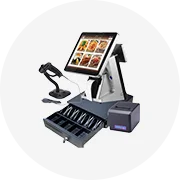
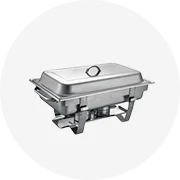

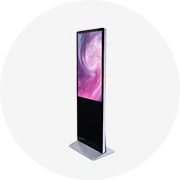





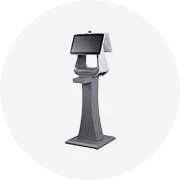
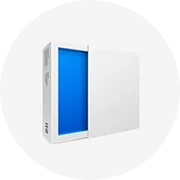









 浙公网安备 33010002000092号
浙公网安备 33010002000092号 浙B2-20120091-4
浙B2-20120091-4